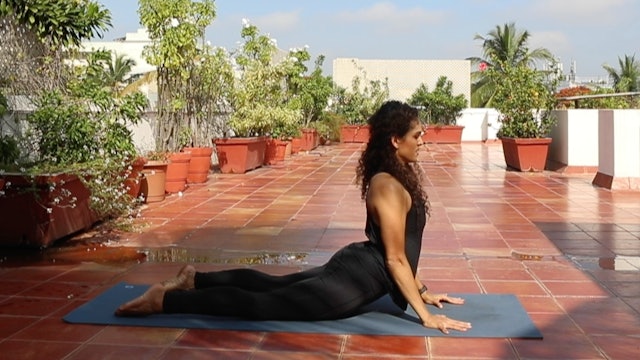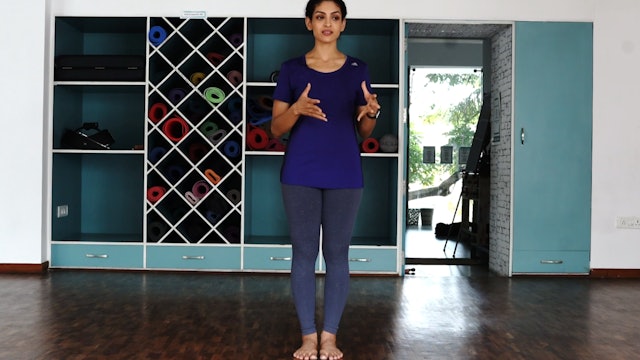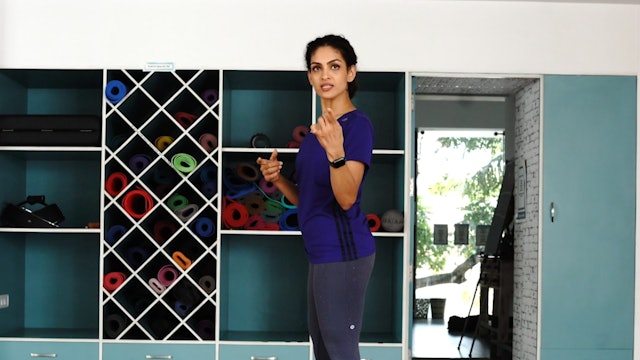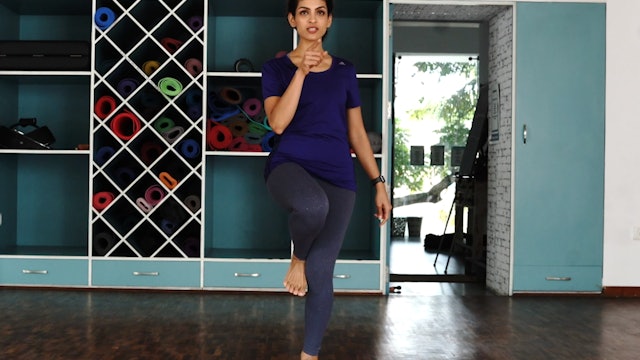-
Warm up flow
This routine approaches your warm-up in a fun, dynamic way. It opens up your body through repetition while paying attention to alignment. You must have been practising all the instructed warm-ups prior to this alongside the first few strength routines in order to follow with ease.
-
Turns: Introduction
Turning is an important part of dancing, and it is integral to precision when there is a change of direction and dynamics in adavus. Focus and core engagement is at the crux of turning and must be paid attention to.
-
Step & turn
The Step & Turn, explains how the mechanics of the first Bramari adavu works. It incorporates ideas of balance and focus adding an element to the first introduction on turns.
-
Turn variation
The 'Turn variation', explains the mechanics of a variation of the Bramari adavu often used in Bharatanatyam choreography. It is used even within existing adavus to change directions in choreography.
-
Simple step & turn
A simple turn that can be used to create many variations when used in combination with jumps, stretching and adavu patterns.
Its is important to master, as the variations may later get confusing.
-
Enveloping turn
This turn is used in many different banis as their primary type of turn. Kuchipudi also uses this type of turn quite extensively. In Bharatanatyam, this becomes one of the various turns that one might use. In the Raadha kalpa method we call it the 'enveloping turn' as there is a sense of covering...
-
Urdva jānu turn
This turn stars with an Urdvajanu, raised knee and then turns after the raised foot cro sses over. It can be embellished with a bend and various arm movements. This type of turn is found in some Karanas and we can use it in Bharatanatyam choreography.
-
Swastika Turn
We use the swastika turn in movement sometimes without realising it. Breaking it down, and practising it separately gives us more options to explore Adavus and also helps us develop clarity when these types of turns appear within choreography.
-
Urudrvtta turn
This turn is commonly used in one of the types of the korwe Adavu. It is important to break it down and practise it so it can become available in other explorative dance sequences witin other Adavus.










